Table of Contents
ToggleIslimi Khataei or nabati (Arabesque) pattern art, with its mesmerizing complexity and captivating beauty, has left an indelible mark on artistic expression. It is characterized by its repeated, intertwined motifs that make “Islimi Khataei” so captivating. From the majestic halls of ancient empires to the delicate pages of Persian miniatures, Islimi Khataei has adorned various forms of artistic expression over the centuries. We embark on a journey through time in this article. Islimi Khataei’s origins, evolution, and enduring allure are explored, as well as its influence on contemporary design.
Islimi Khataei in the Achaemenid Empire
As a fundamental element of its artistic repertoire, Islimi Khataei (Arayehaye Giyahi in Persian) was adopted as a fundamental principle by the Achaemenid Empire, an ancient Persian civilization. In both royal palaces and temples, Islimi Khataei’s art graced the walls, captivating all who beheld its harmonious designs on the walls of the palaces and temples. The motifs employed in Achaemenid Islimi Khataei often reflected elements of nature, which symbolized the empire’s connection with its environment and its unity with nature.
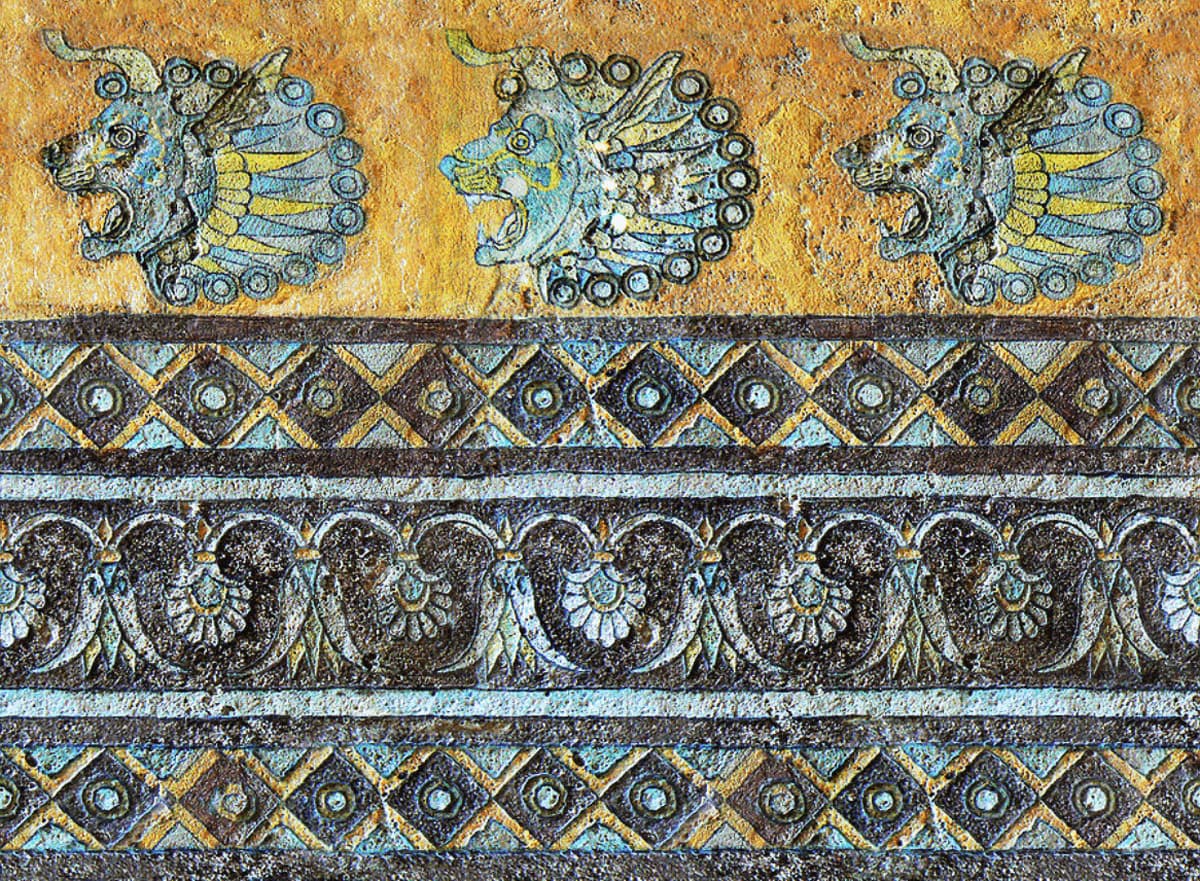
Persepolis and Potential Influence of Islamic Khataei
Persepolis, also known as Takht-e-Jamshid, is an ancient archaeological site located in Iran. It was the ceremonial capital of the Achaemenid Empire, which predates the Islamic era. While the art and architecture of Persepolis primarily belong to the Achaemenid period, it’s important to acknowledge that Islamic Khataei, or Arabesque art, emerged in the Islamic era and is not directly present at Persepolis itself.
Islamic Khataei is characterized by intricate interlacing patterns of vines, leaves, and geometric patterns, often accompanied by calligraphy. This artistic style began to flourish after the rise of Islam and became a prominent feature in Islamic art and architecture, particularly from the medieval period onward.
However, the artistic motifs and techniques used in Persepolis may have indirectly influenced the development of later Islamic art forms, including Khataei. The Achaemenid Empire’s artistic legacy, as seen in the carvings, reliefs, and architectural features at Persepolis, showcased detailed representations of flora, fauna, and intricate patterns. While not identical to Khataei, these motifs could have served as a source of inspiration for the later development of Arabesque patterns in Islamic art.
It’s important to note that Persepolis belongs to a time and cultural context distinct from the emergence of Islamic Khataei. While direct examples of Arabesque art might not be found in the Achaemenid archaeological remains, the ornamental traditions of various civilizations, including those from the Achaemenid period, contributed to the rich tapestry of influences that shaped Islamic art, including the later development of Khataei.
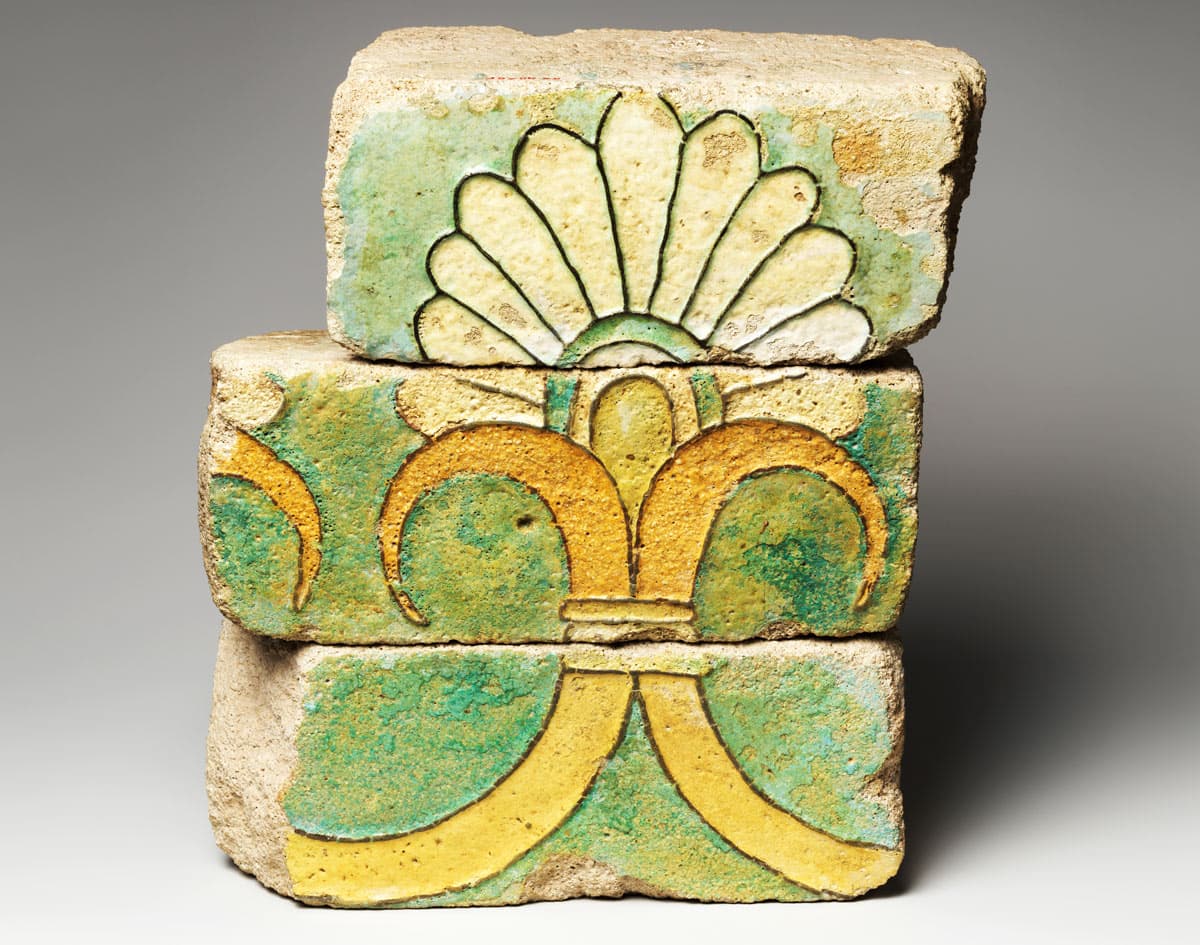
Islamic Khataei (Arabesque Art) in the Sasanian Empire
Islamic Khataei, often referred to as Arabesque art, is a distinctive style of ornamental design characterized by intricate patterns of interlacing vines, foliage, and geometric shapes. It is a hallmark of Islamic art and has been used extensively to decorate various forms of artistic expression, from architecture and manuscripts to textiles and ceramics. While the term “Islamic” is commonly associated with Arabesque art, its origins can be traced back to various cultures and civilizations, including the Sasanian Empire.
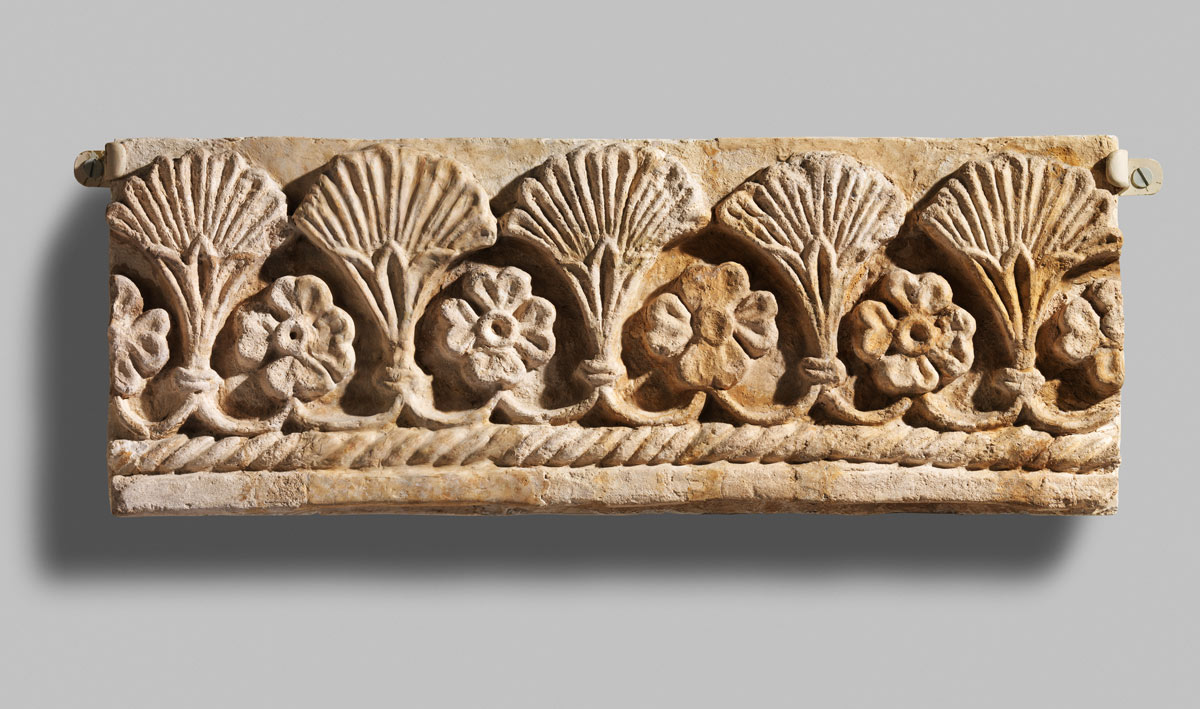
The Sasanian Empire (224–651 CE) was a major pre-Islamic Iranian empire that existed in the region of modern-day Iran. While Islamic Khataei is more commonly associated with the Islamic era that followed the Sasanian Empire, it is worth noting that the seeds of this artistic style were likely sown during the Sasanian period.
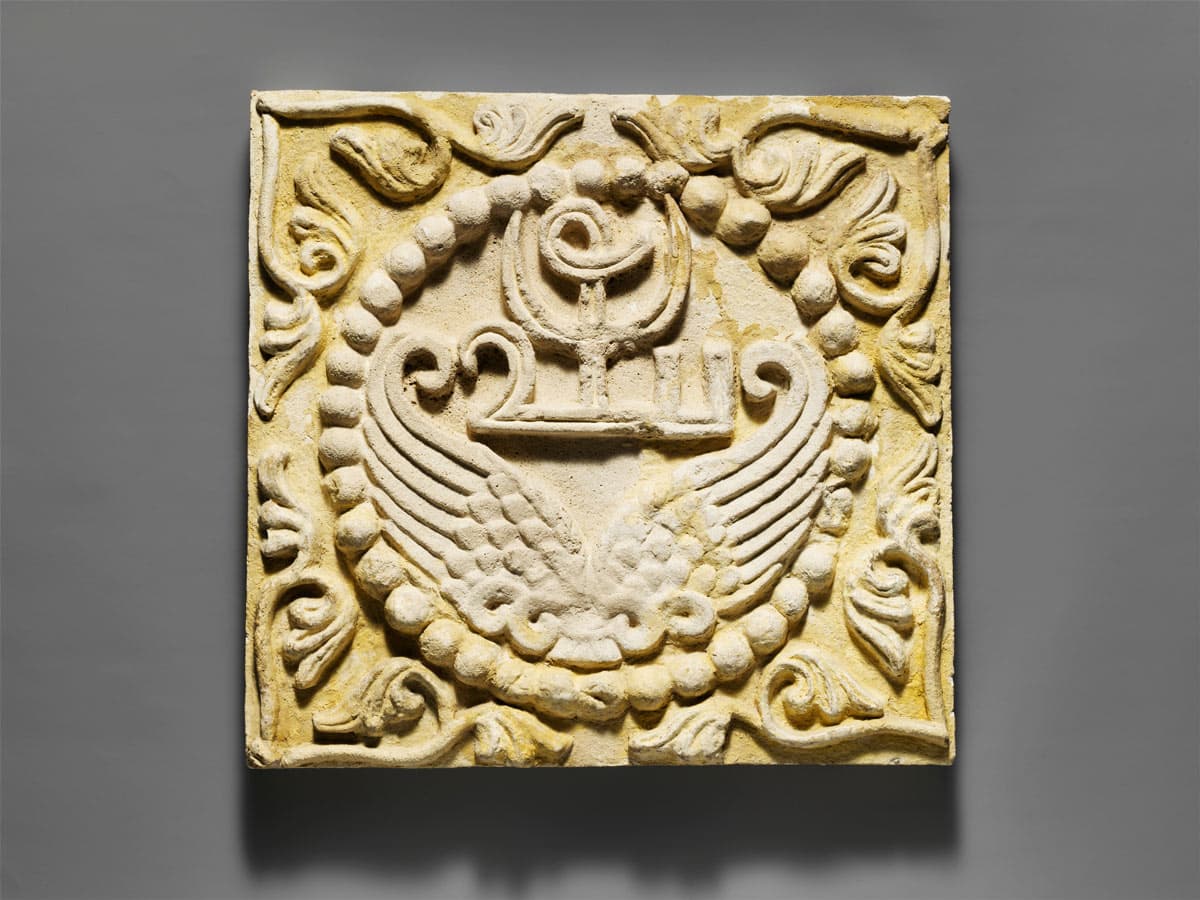
Sasanian art was marked by its rich iconography, attention to detail, and elaborate craftsmanship. While the Sasanian Empire predates the rise of Islam, many of its artistic and architectural elements influenced subsequent Islamic art forms, including Khataei. The Sasanian Empire had a profound impact on the development of Islamic art, acting as a bridge between the earlier civilizations of the Near East and the artistic traditions that emerged under Islamic rule.
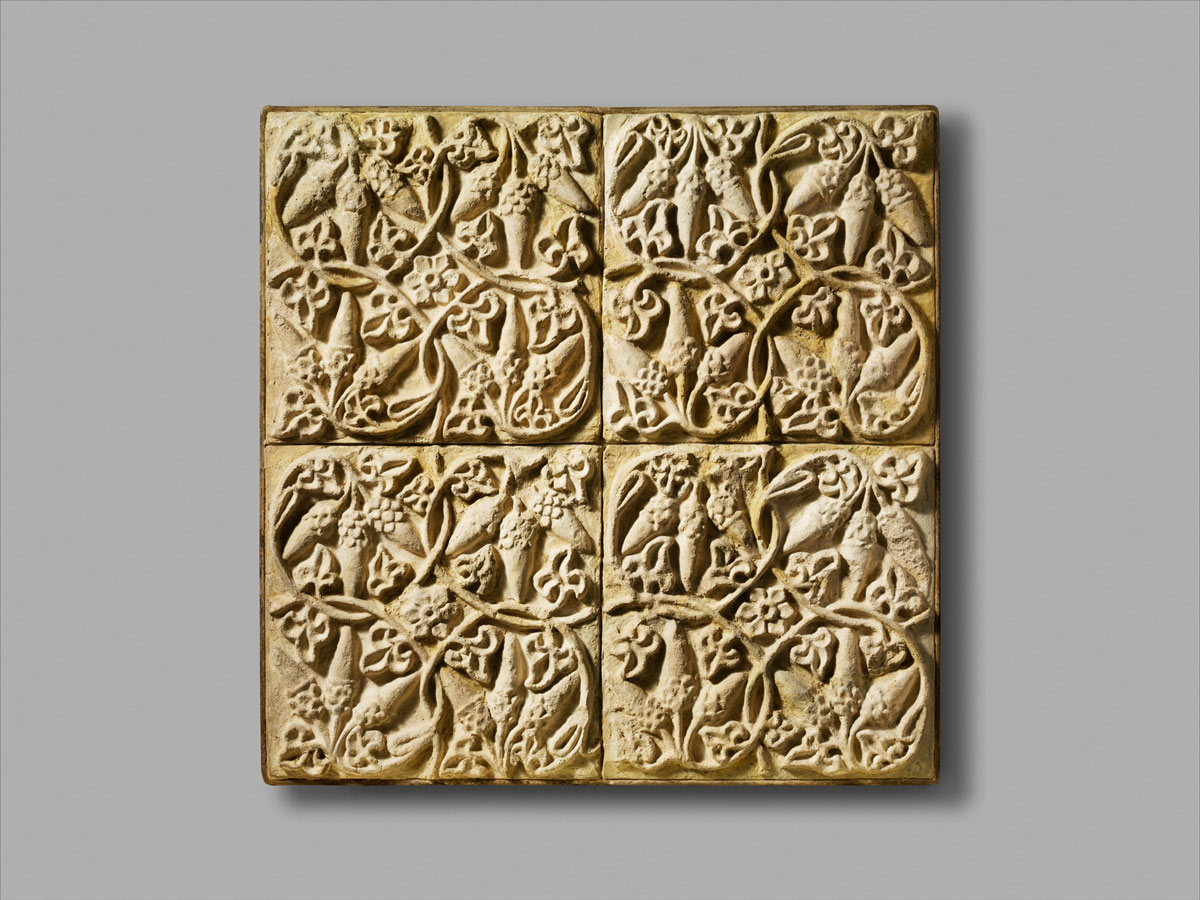
The intricate motifs found in Sasanian art, including the depiction of flora, fauna, and complex geometric patterns, laid the groundwork for the emergence of Arabesque art in the Islamic world. These motifs were often used in a variety of contexts, such as on palace walls, metalwork, ceramics, and textiles. The fusion of these decorative elements with Islamic calligraphy, which became a central aspect of Islamic art, further contributed to the evolution of Arabesque patterns.
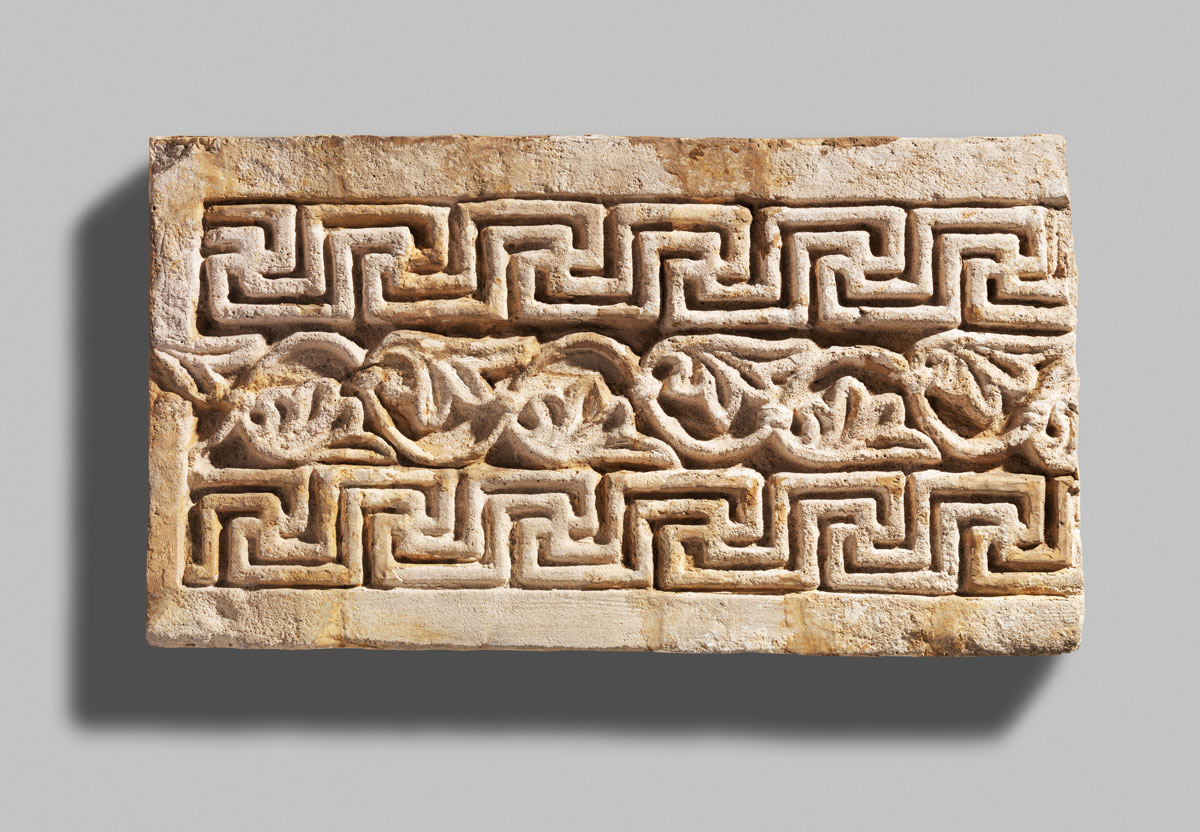
When Islam emerged and spread across the region, it absorbed and adapted various artistic influences, including those from the Sasanian Empire. Islamic artists continued to develop and refine the Arabesque style, integrating it with Islamic principles and aesthetics. Arabesque art became closely associated with Islamic identity, embodying the idea of unity through intricate diversity, much like the interlacing patterns themselves.
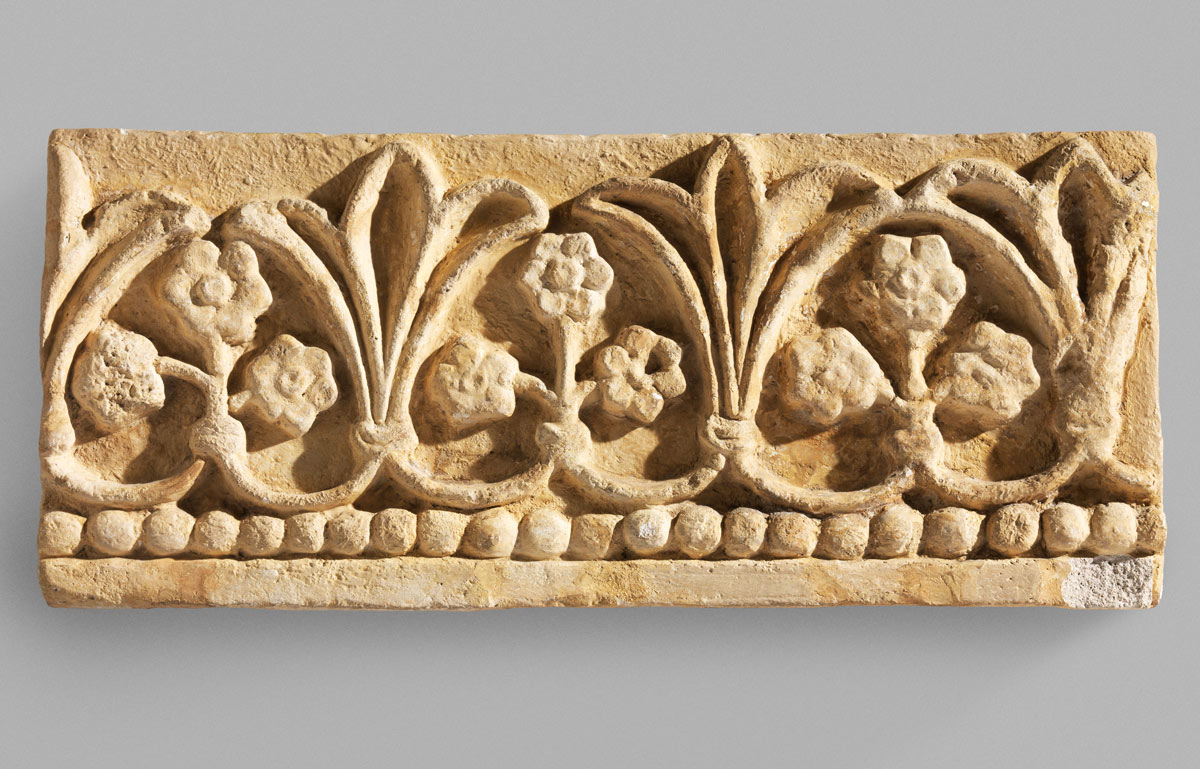
Taq-e Bostan and Islamic Khataei
Taq-e Bostan is an archaeological site located near the city of Kermanshah in western Iran. It is renowned for its rock reliefs and ancient Persian architectural elements, many of which are associated with the Sasanian Empire. Among the various artistic features found at Taq-e Bostan, Islamic Khataei, or Arabesque art, is indeed present in some of the decorations and reliefs.
The site includes several large rock reliefs that depict scenes of royal hunting, feasting, and courtly activities. These reliefs are carved into the rock face and are notable for their intricate details, including clothing, jewelry, and architectural elements. While the Sasanian Empire predates the Islamic era, the artistic motifs and techniques used in these reliefs had a lasting influence on subsequent Islamic art, including the development of Arabesque patterns.
One of the reliefs at Taq-e Bostan features the investiture scene of Khosrow II, also known as Khosrow Parviz, one of the prominent Sasanian kings. This particular relief showcases a combination of realistic figures and ornate architectural elements, some of which exhibit Arabesque patterns. The delicate intertwining vines, leaves, and geometric designs characteristic of Arabesque art can be observed adorning parts of the architectural backdrop in this relief.
These Arabesque-inspired elements found in the reliefs of Taq-e Bostan highlight the continuity of artistic motifs and techniques from the Sasanian period into the Islamic era. The intricate and harmonious patterns that characterize Islamic Khataei are visible reminders of the artistic heritage of the region, with roots stretching back to the Sasanian Empire.
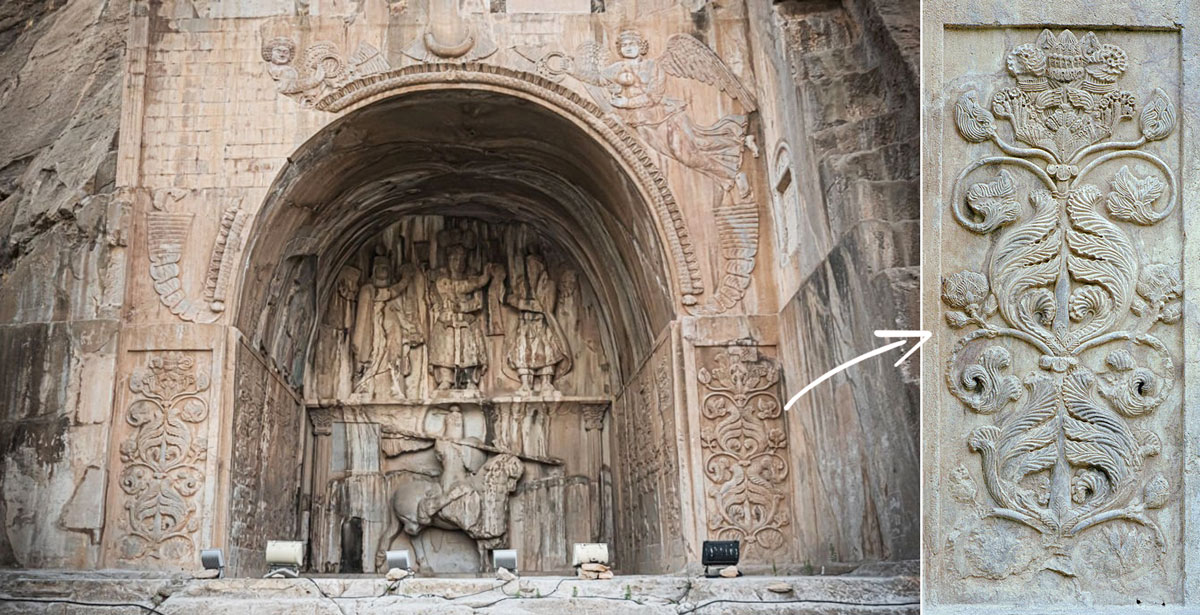
Read more: Islamic Wall Art
Islimi Khataei (arabesque) art in Persian Miniature
The delicate art of Persian miniature painting delicately wove Islimi Khataei into its compositions, adding a layer of symbolism and sophistication to the illustrations. The intricate patterns complemented scenes depicting courtly life, epic tales, and mystical realms, showcasing the mastery of Persian artists in merging storytelling with geometric elegance.
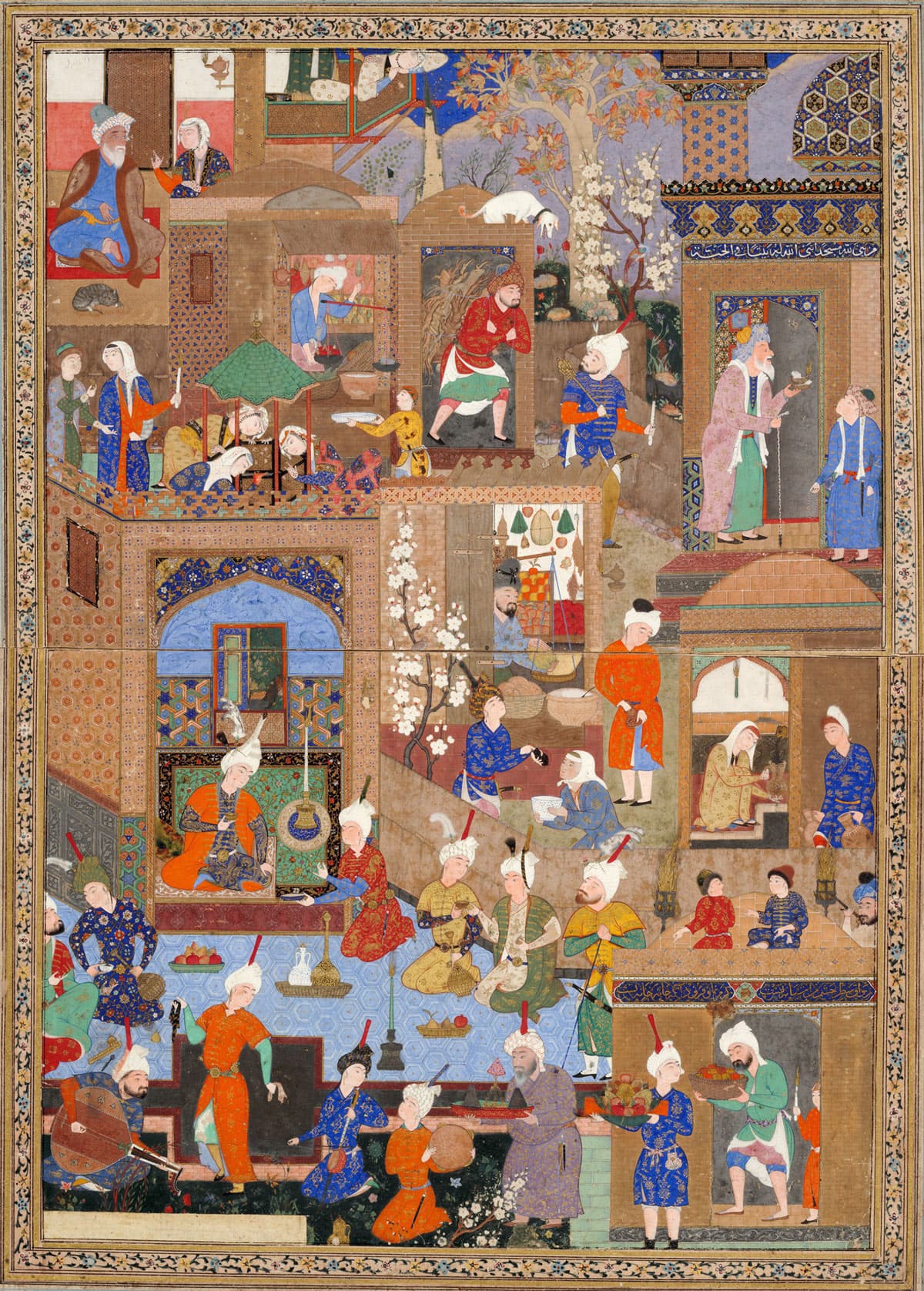
Islimi Khataei (Arabesque) art in Architecture
There is no doubt that Islimi Khataei flourished in the realm of architecture, as he designed magnificent domes for mosques and ornate facades for palaces. It was not uncommon to find interlacing patterns adorning walls, ceilings, and even the smallest details of buildings, transforming spaces into breathtaking works of art with their intricate patterns. We explore the significance of Islimi Khataei in diverse architectural styles and marvel at its continued presence in historical structures.
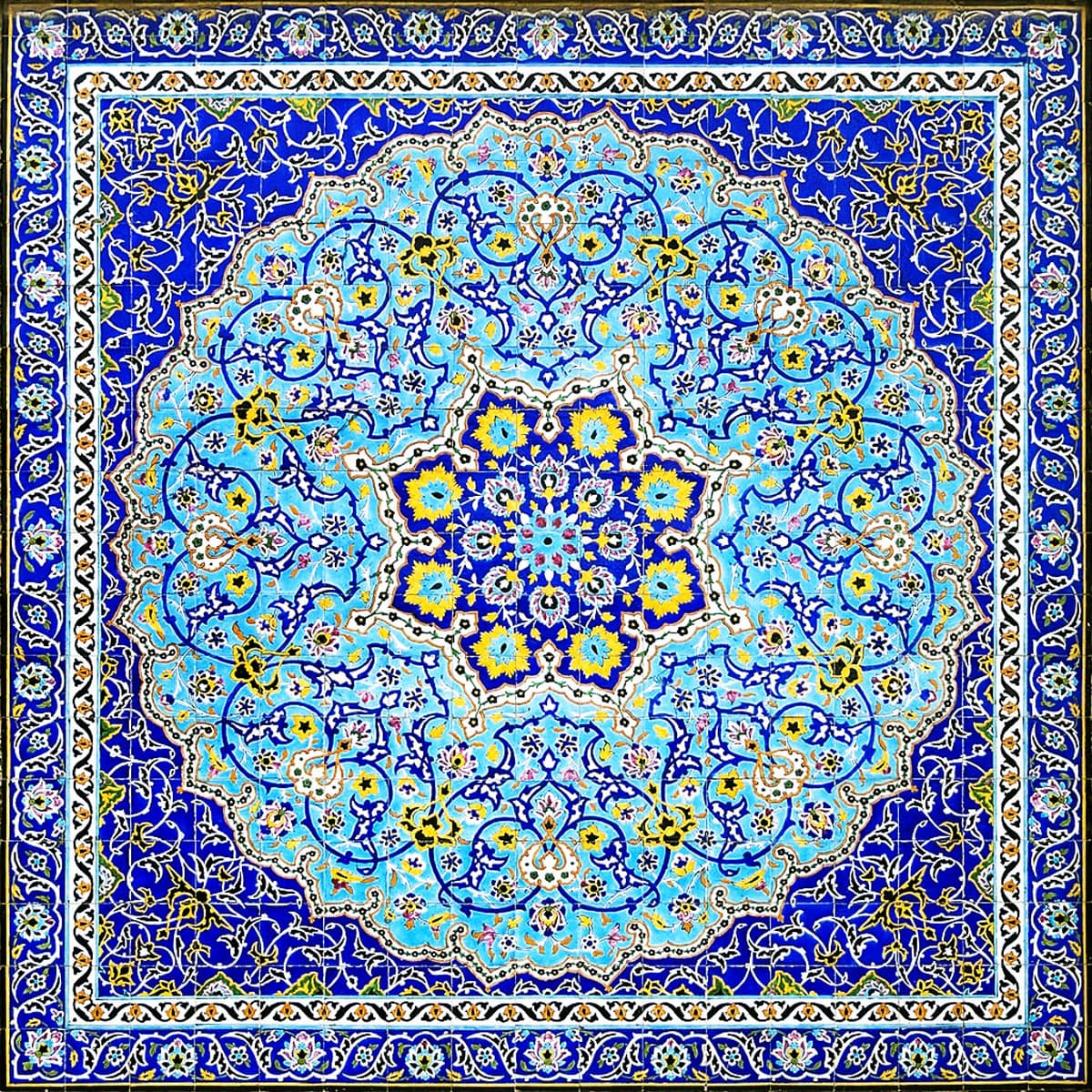
Evolution of Islimi Khataei in Islamic-era Art
With the spread of Islam, Islimi Khataei found new expressions in Islamic art, particularly in geometric patterns. Islamic artists skillfully integrated Islimi Khataei into the creation of mesmerizing mosaics and tile works, enriching religious spaces with spiritual symbolism.
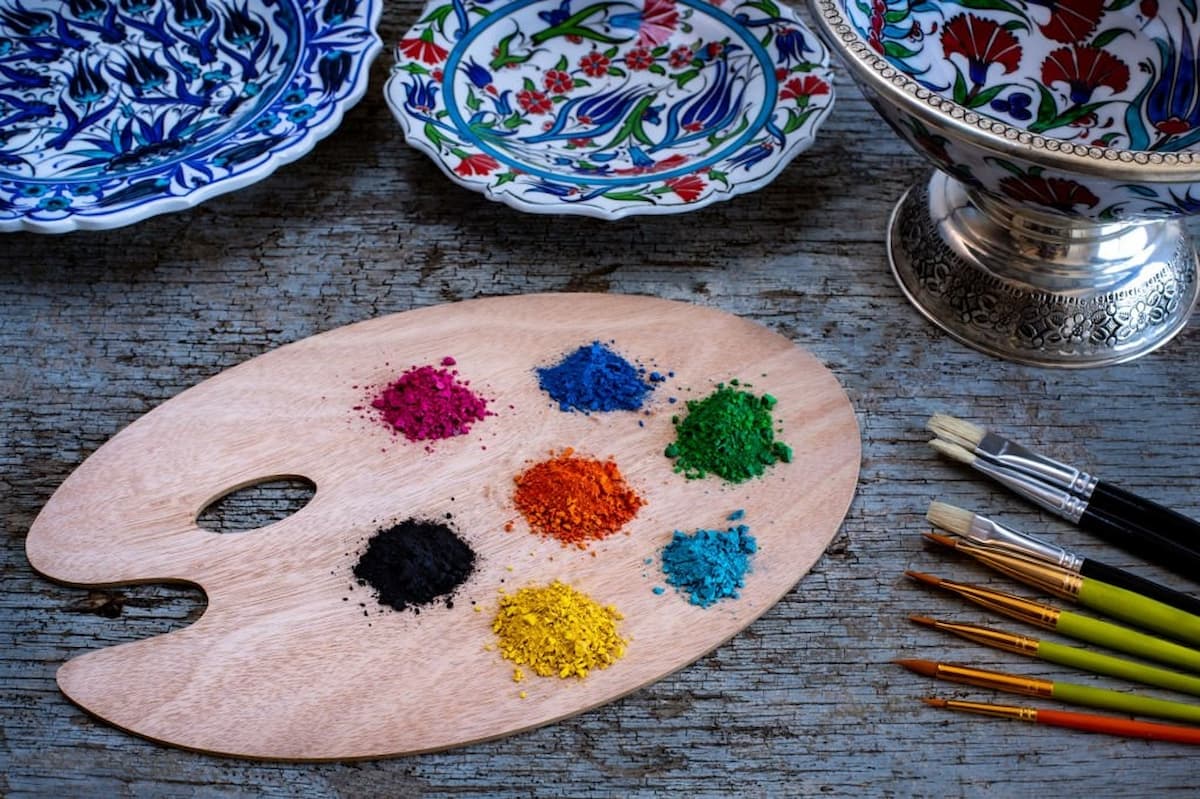
Islimi Khataei in Contemporary Art
While rooted in history, Islimi Khataei has transcended time and continues to inspire contemporary artists worldwide. We delve into the realm of modern art, witnessing how innovative creators breathe new life into traditional Islimi Khataei patterns, blending ancient elegance with a modern flair.
The Art of Creating Islimi Khataei or Arabesque Art
Behind the mesmerizing beauty of Islimi Khataei lies the artistry of skilled craftsmen. We explore the techniques and methods employed in crafting these intricate patterns, appreciating the dedication required to produce such works of art.
Symbolism and Meaning in Arabesque Art
Beyond their aesthetic appeal, Islimi Khataei patterns often carry profound symbolism and stories. We uncover the meaning behind common motifs and designs, revealing the cultural context that breathes life into these intricate creations.
The Global Impact of Arabesque Art
The allure of Islimi Khataei extends far beyond the borders of the Middle East. Its influence has traversed continents, inspiring artists, and designers worldwide. We witness how this timeless art form has made its mark on diverse cultures and art styles.
Islimi Khataei in Contemporary Design
The versatility of Islimi Khataei extends to the realm of modern design. From interior decor to fashion, we explore how designers seamlessly blend the elegance of Islimi Khataei into everyday products and contemporary aesthetics.
Preservation and Conservation of Islimi Khataei
Over time, preserving the delicate heritage of Islimi Khataei becomes paramount. We examine the challenges faced in conserving ancient Islimi Khataei artwork and the efforts made to safeguard this cultural treasure.
Appreciating Islimi Khataei as an Art Form
The appeal of Islimi Khataei lies not only in its aesthetic grandeur but also in the emotions it evokes. We invite readers to embrace the enchantment of Islimi Khataei and recognize the value of preserving cultural heritage through art.
The Mystical Symbolism of Islimi Khataei in Sufi Art
Islimi Khataei found a profound connection with Sufi art, where its mesmerizing patterns held deep mystical significance. Sufi artists used Islimi Khataei to represent the interconnectedness of all things and divine unity. We delve into the spiritual symbolism of Islimi Khataei in Sufi art, exploring its role in expressing profound philosophical concepts and mystical experiences.
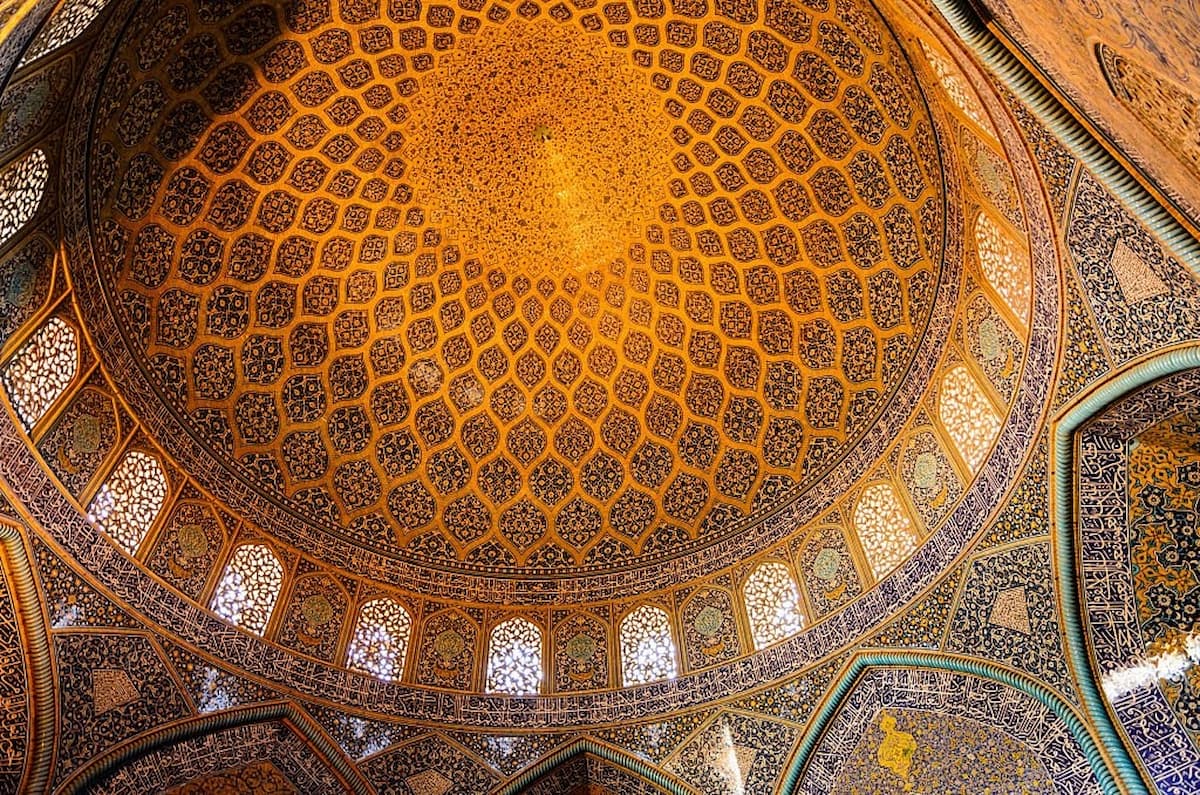
The Role of Arabesque Art in Islamic Calligraphy
The fusion of Islimi Khataei with the art of calligraphy created a harmonious blend of beauty and meaning. Islamic calligraphers skillfully incorporated Islimi Khataei patterns into their script work, enhancing the visual appeal of sacred verses and religious texts. We witness the splendor of Islimi Khataei in Islamic calligraphy and its impact on the aesthetics of written art.
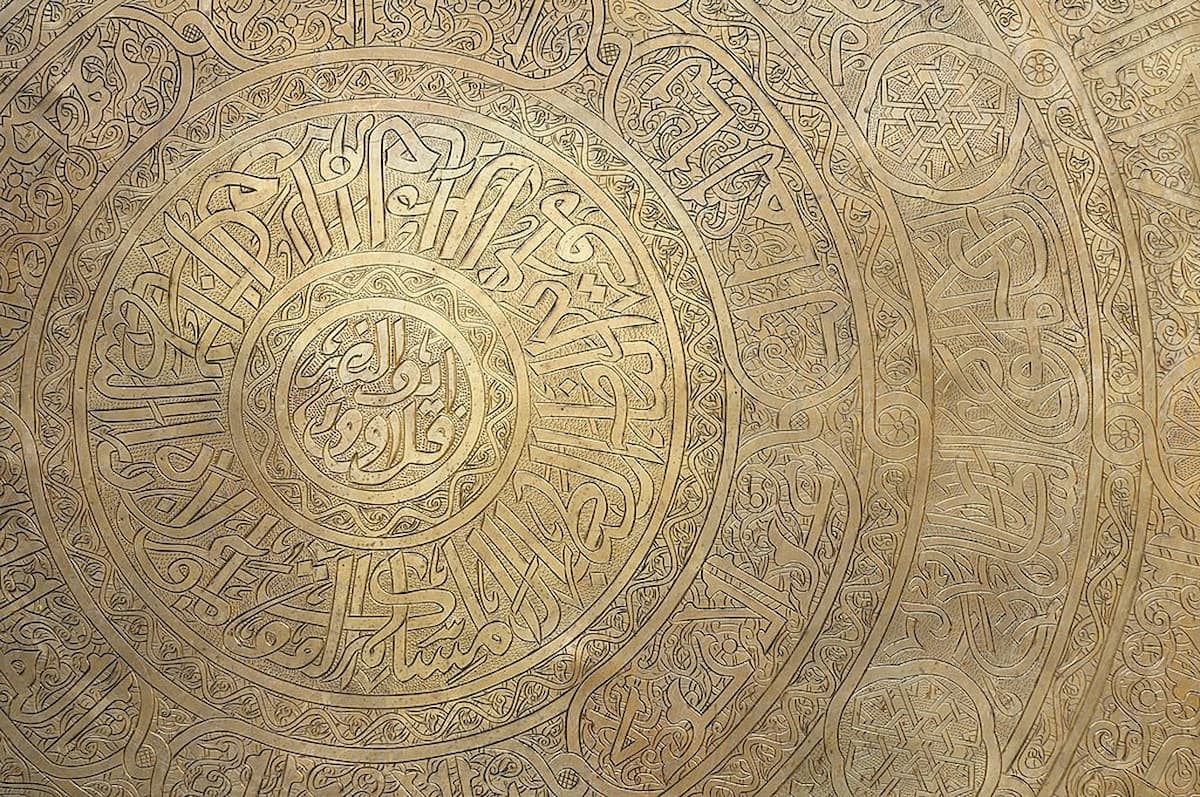
Regional Variations of Islimi Khataei in Art and Architecture
As Islimi Khataei spread across various regions, it underwent artistic adaptations, reflecting the unique cultural nuances of each area. We explore the regional variations of Islimi Khataei in art and architecture, from the intricate patterns of Central Asian mosques to the delicate designs adorning the walls of Andalusian palaces.
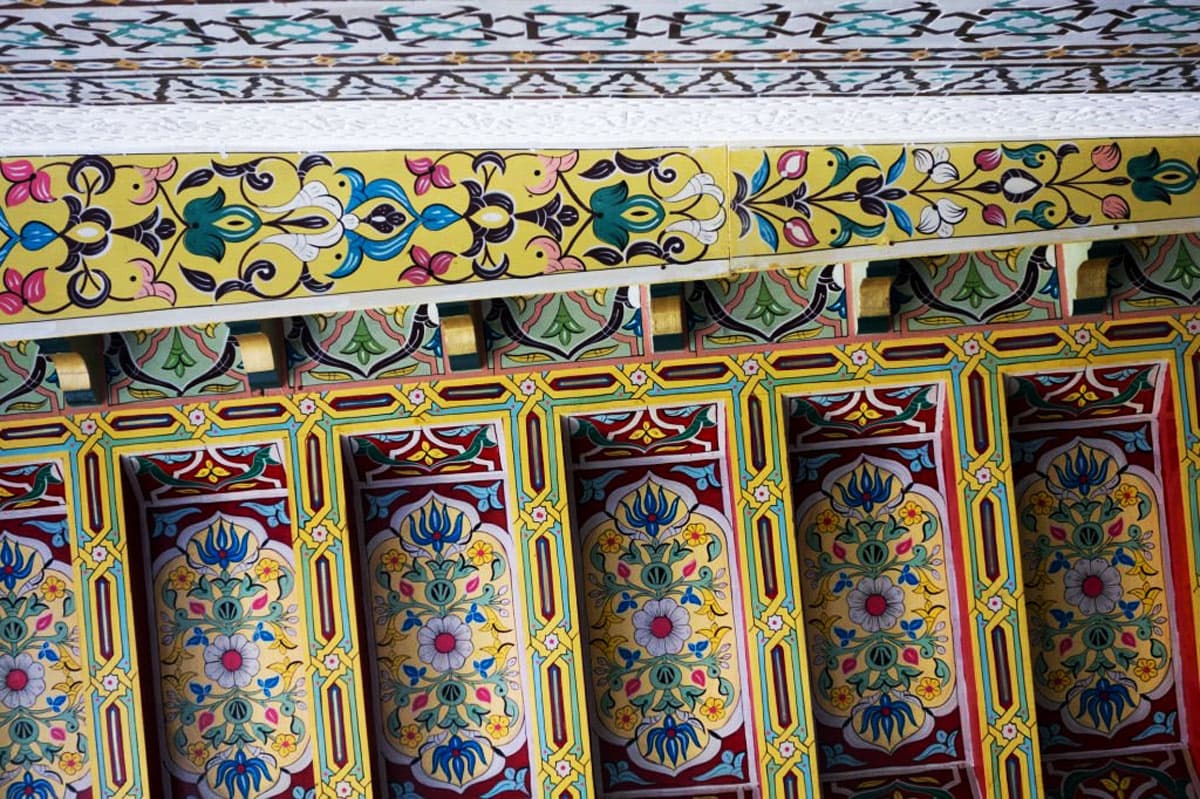
The geometry of Islimi Khataei
At the core of Islimi Khataei lies an intricate system of geometry and mathematical precision. Artists and craftsmen employed precise calculations to create flawless symmetries and captivating patterns. We unveil the mathematical brilliance behind Islimi Khataei, revealing the meticulous process that brings its mesmerizing beauty to life.
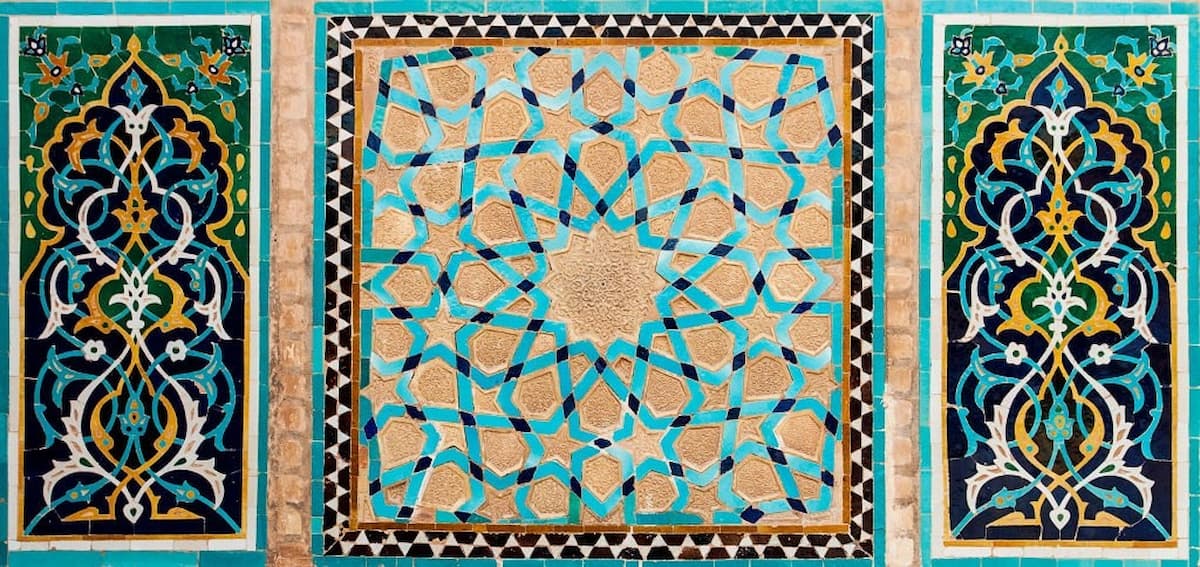
A Living Tradition of Artisanal Craftsmanship
Despite the passage of time, traditional Islimi Khataei craftsmanship endures, carried forward by dedicated artisans and master craftsmen. We meet the skilled hands and passionate hearts preserving this ancient art form, understanding the significance of passing down this cultural heritage through generations.
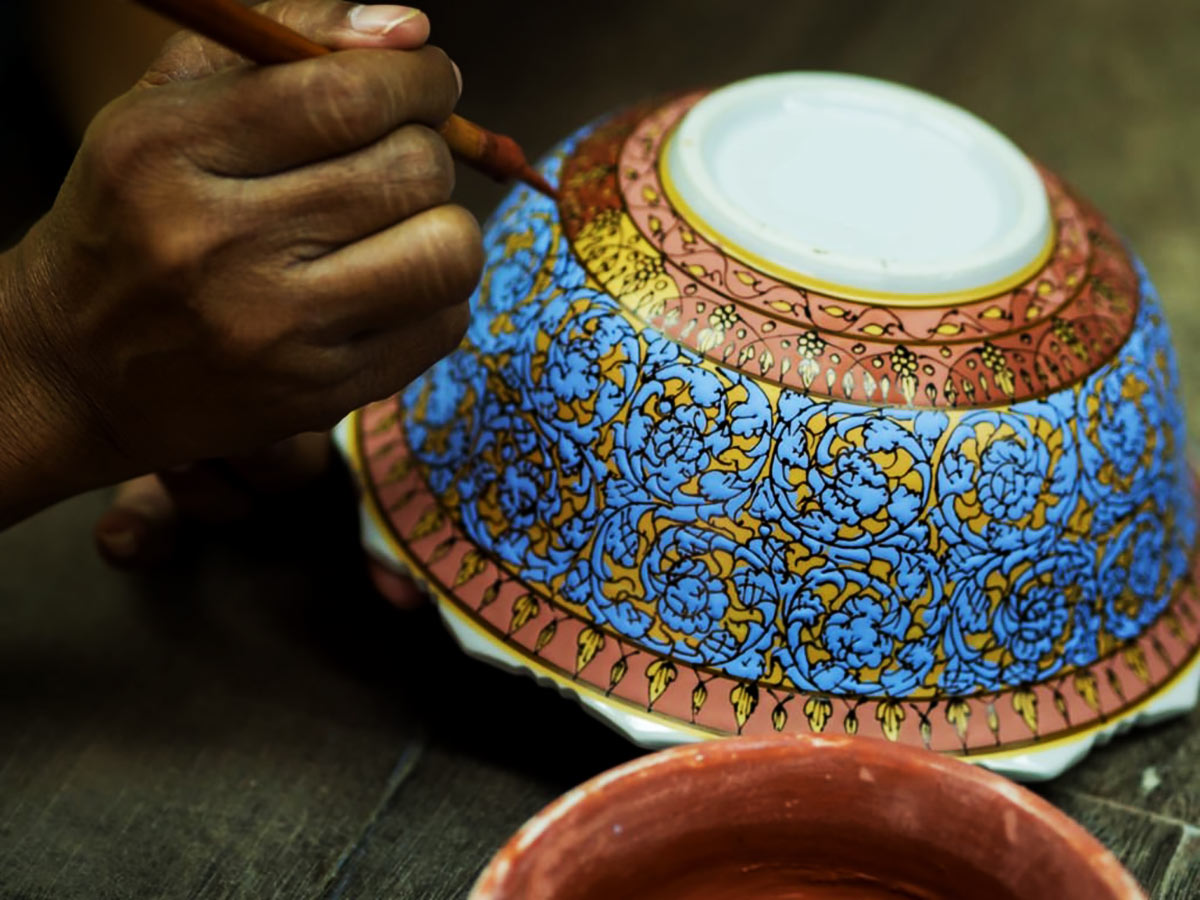
Arabesque art in Carpets and Textiles
The art of Islimi Khataei extended to the realm of carpets and textiles, where skilled weavers transformed threads into mesmerizing patterns. We explore the intricacy of Islimi Khataei in woven masterpieces, from the grandeur of Persian rugs to the delicate elegance of silk textiles, witnessing how these creations adorned homes and adorned the lives of people.
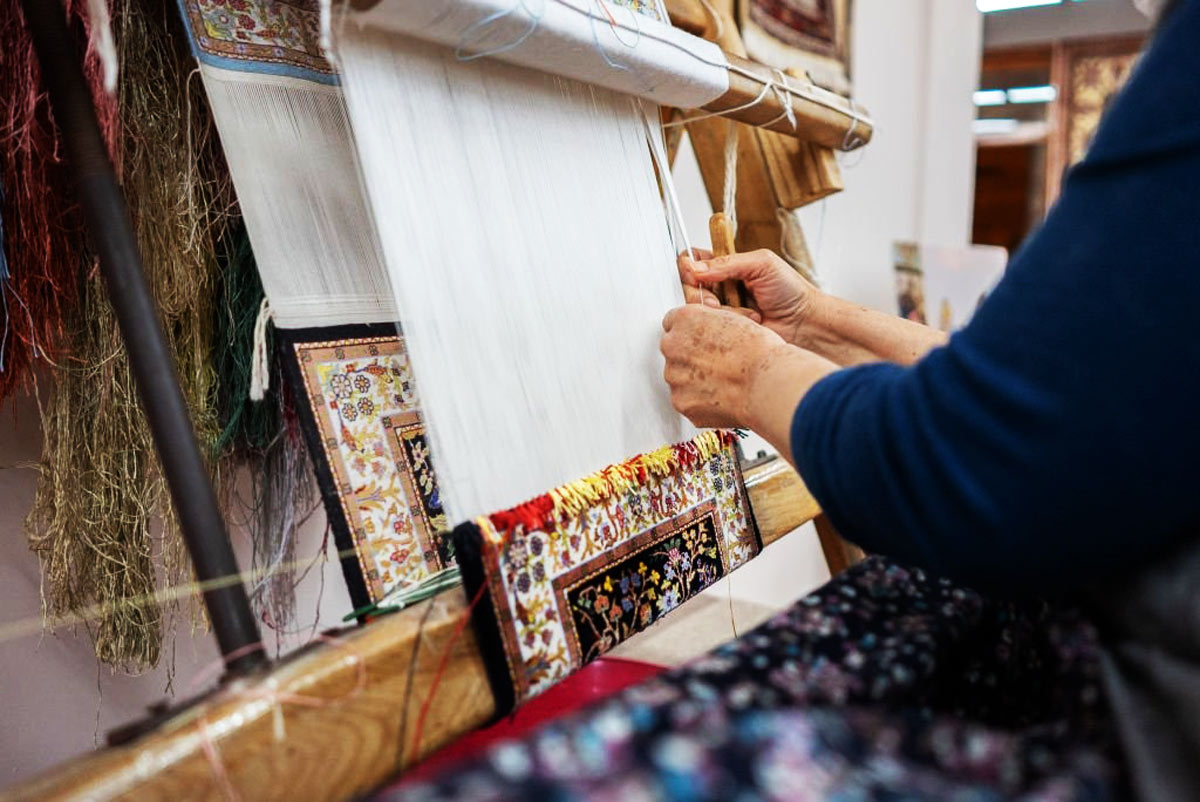
Read more: Persian tile work
Islimi Khataei on Ceramic and Pottery Art
The art of ceramics and pottery embraced Islimi Khataei, creating a marriage of form and pattern. We examine the incorporation of Islimi Khataei in ceramic artwork from various cultures, marveling at the precision of designs on vases, plates, and other vessels, and how these masterpieces became sought-after collectors’ items.
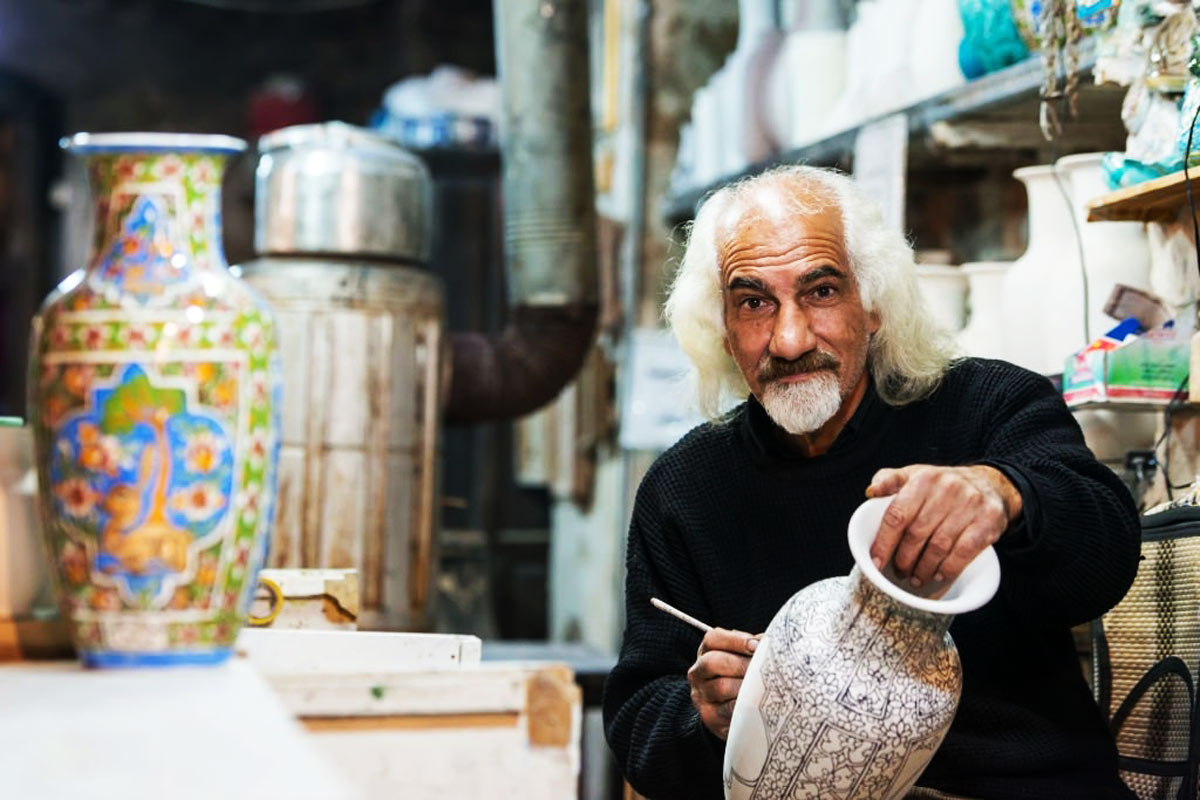
Arabesque art in Manuscripts
Medieval manuscripts were transformed into visual delights with the infusion of Islimi Khataei patterns. We take a visual journey through ancient manuscripts, exploring how these mesmerizing motifs adorned the borders and margins, enhancing the allure of written works and preserving cultural knowledge.
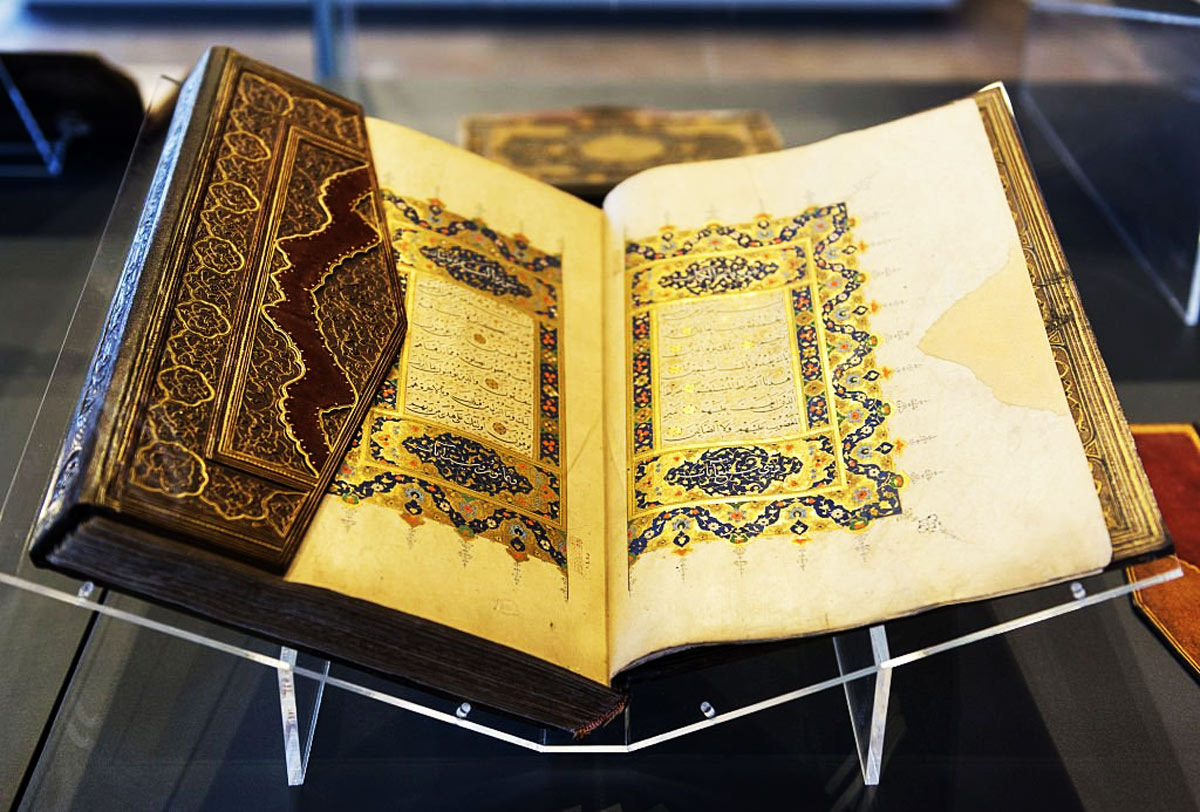
The Healing Power of Islimi Khataei
Beyond its aesthetic allure, Islimi Khataei has found a place in art therapy, promoting relaxation, mindfulness, and emotional healing. We delve into the therapeutic potential of Islimi Khataei, understanding how engaging with this art form can be a source of solace and well-being.
Islimi Khataei served as a cultural bridge, transcending borders and fostering connections between East and West. We explore the influence of Islimi Khataei on European art and architecture during the Renaissance, recognizing its role in inspiring a dialogue between civilizations.
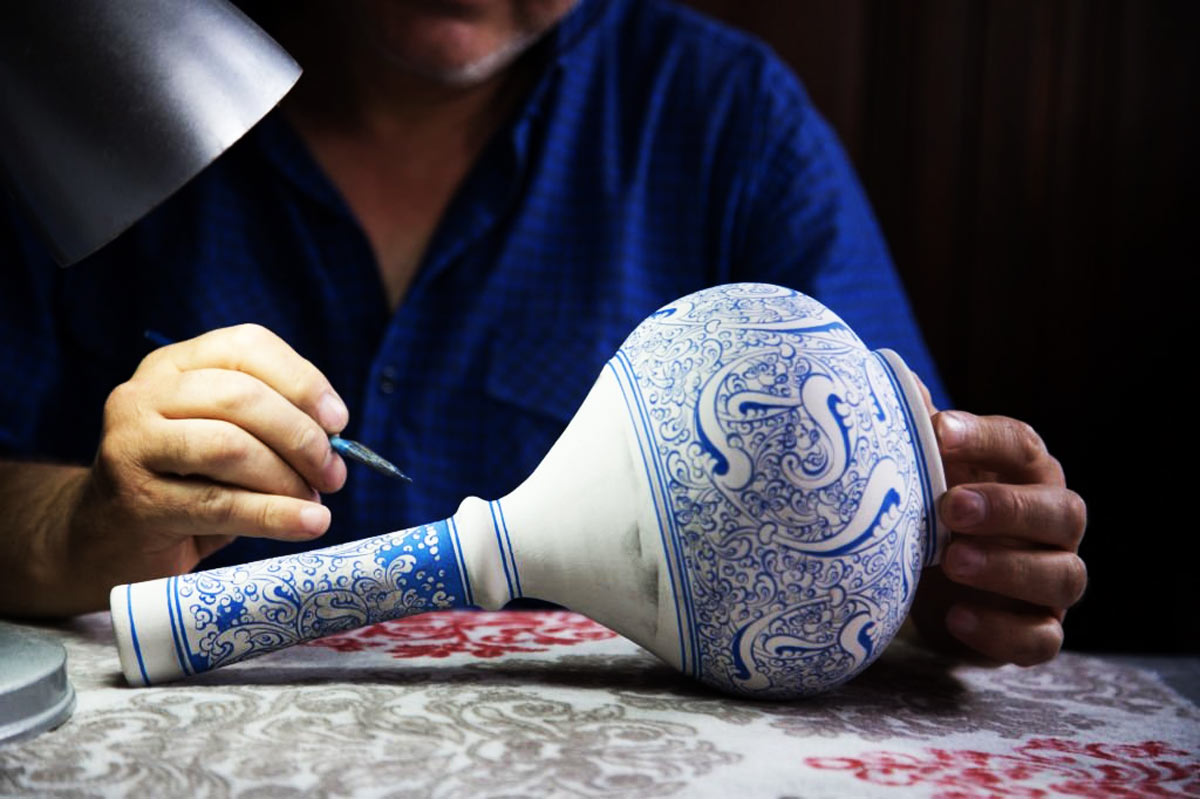
Islamic-era Gardens: An Oasis of Islimi Khataei
The enchanting motifs of Islimi Khataei found their way into Islamic gardens, transforming them into serene oases of beauty. We journey through the lush landscapes adorned with Islimi Khataei-inspired elements, understanding the symbolic significance of these designs in the context of nature and spirituality.
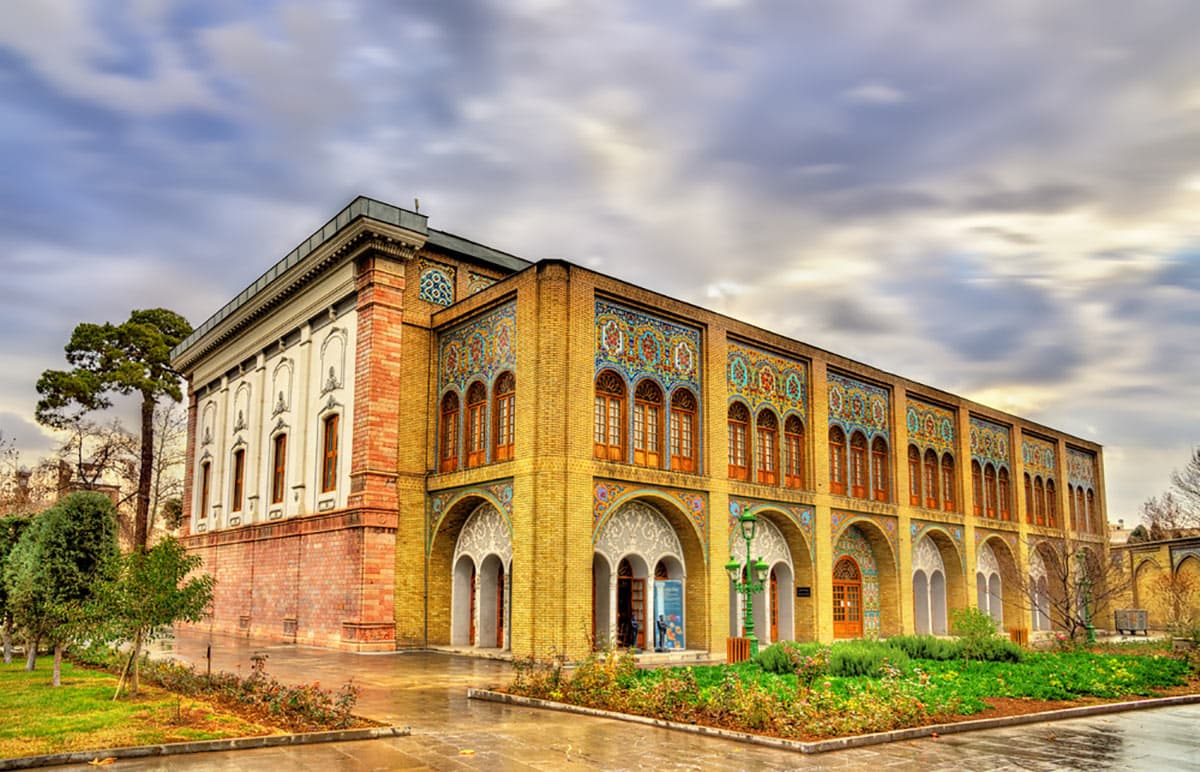
Arabesque Art and Inspiration in Modern Digital Art
In the digital age, Islimi Khataei continues to inspire artists in the realm of digital art and graphic design. We explore how technology enables the reimagining of traditional Islimi Khataei patterns, and how this art form finds expression in virtual spaces.
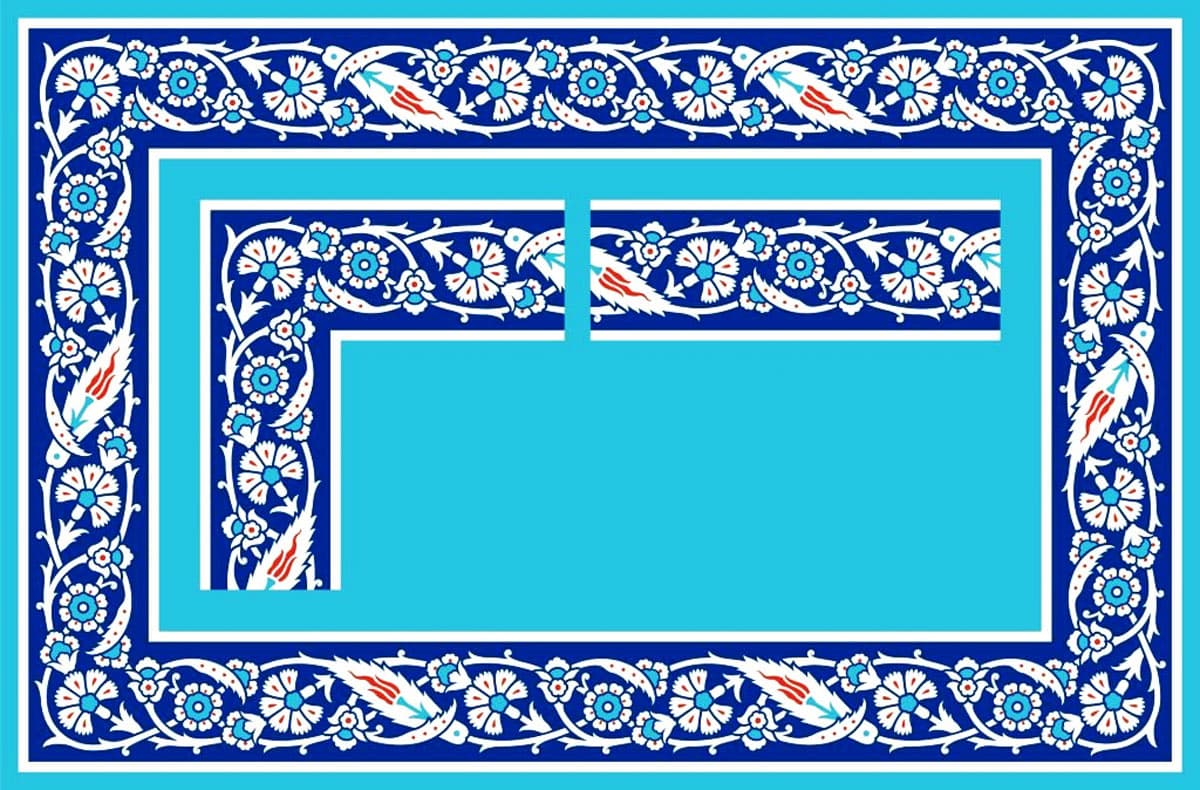
Islimi Khataei in Contemporary Fashion
Fashion designers are embracing Islimi Khataei, infusing traditional patterns into contemporary clothing and accessories. We witness how Islimi Khataei adds a touch of elegance and uniqueness to modern fashion, making a bold statement in the world of style.
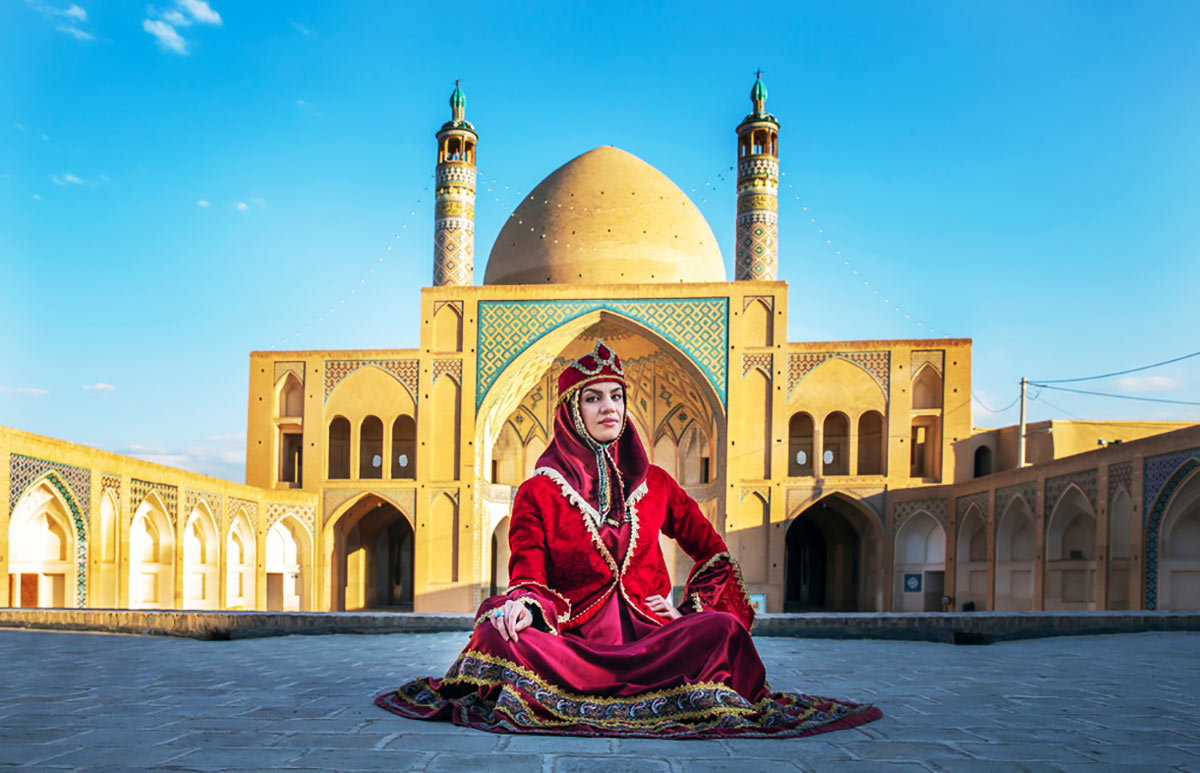
The Enduring Legacy of Arabesque Art
As we conclude our exploration, we reflect on the enduring legacy of Islimi Khataei and the responsibility to safeguard this artistic heritage for future generations. We emphasize the importance of preserving traditional craftsmanship, ensuring that the beauty and cultural significance of Islimi Khataei continue to captivate hearts for centuries to come.
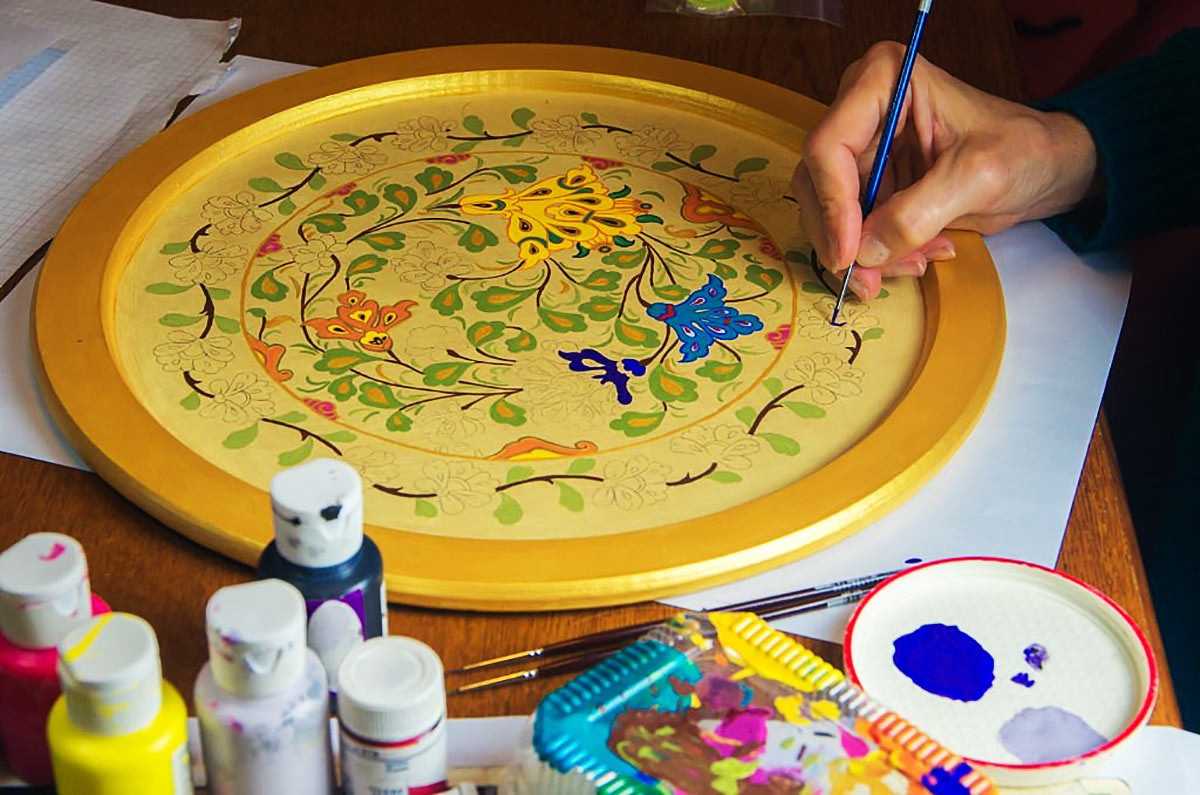
Read more: Persian geometric patterns
Conclusion
Islimi Khataei, an enchanting manifestation of Arabesque art, stands as a testament to the creativity and skill of generations past. This mesmerizing art form is a breathtaking symphony of intricately interwoven patterns, representing the harmonious blending of nature, spirituality, and artistic expression. As we celebrate its timeless allure and enduring legacy, let us embark on a journey through the annals of history, where Islimi Khataei has left an indelible mark on the artistic landscape.
Embracing Islimi Khataei is like unraveling a treasure trove of cultural heritage and artistic brilliance. Rooted in ancient civilizations, this art form serves as a bridge connecting us to the aesthetics and ideals of bygone eras. It whispers the stories of artisans, who with devoted hands, meticulously crafted these awe-inspiring patterns that continue to captivate the modern eye. Each delicate curve and symmetrical motif bears witness to the mastery of craftsmen who pursued perfection in their artistry.
As we cherish Islimi Khataei, we acknowledge its significance as more than just an ornamental design. It is a mirror reflecting the rich tapestry of human history, narrating the tales of empires, cultures, and spiritual beliefs. This art form found its way into the palaces of kings, the sanctuaries of mosques, and the pages of sacred texts, transcending geographical boundaries and uniting diverse communities through a shared admiration for its beauty.
Beyond its visual splendor, Islimi Khataei holds a deeper spiritual essence. Its winding patterns are said to symbolize the infinite interconnectedness of all existence, representing the eternal cycle of life and the eternal pursuit of knowledge and wisdom. The contemplation of Islimi Khataei can transport one into a realm of tranquility, encouraging a moment of reflection and inner peace.
As we celebrate the enduring legacy of Islimi Khataei, let us also recognize the efforts of modern artisans and designers who keep this art form alive. They breathe new life into traditional motifs, infusing them with contemporary expressions, and making Islimi Khataei relevant in the ever-changing world of art and design.
In cherishing Islimi Khataei, we pay homage to the legacy of our ancestors and honor the ingenuity that transcends time. It invites us to not only appreciate its mesmerizing beauty but also to value the preservation of our cultural heritage. By safeguarding and passing down this art form to future generations, we ensure that the enchantment of Islimi Khataei continues to inspire, enrich, and connect people across ages and borders.
So, let us immerse ourselves in the enigmatic beauty of Islimi Khataei, traversing the delicate lines and intricate motifs that speak to the soul. It is a celebration of human creativity, a tribute to the enduring spirit of art, and a reminder of the profound power that artistic expression holds in shaping our identities and connecting us to our past. As we marvel at its timeless allure, let us be grateful for this precious link to our artistic and cultural heritage, which transcends time and remains a beacon of inspiration for generations yet to come.
FAQs
What is Islimi Khataei?
Islimi Khataei or Arabesque art is an awe-inspiring and intricate art form that captivates the imagination with its mesmerizing patterns. At its core, Islimi Khataei is characterized by gracefully intertwining and repetitive motifs, creating a seamless tapestry of beauty. Rooted in Arabesque art, this artistic expression weaves a symphony of lines and curves, entwining floral elements, geometric shapes, and intricate designs into a harmonious whole.
The beauty of Islimi Khataei lies not only in its visual appeal but also in the symbolism it embodies. Through its symmetrical and rhythmic patterns, Islimi Khataei reflects the eternal interconnectedness of all things—a profound philosophical concept that has been revered across cultures and spiritual traditions. Each element in the design is thoughtfully placed, emphasizing the infinite continuity and unity that underlie the diverse facets of existence.
Where did Islimi Khataei originate?
The roots of Islimi Khataei trace back to the ancient and illustrious Persia, with a significant presence in the Achaemenid Empire, an ancient Persian civilization known for its grandeur and artistic achievements. In the artistic endeavors of the Achaemenid Empire, Islimi Khataei flourished as a fundamental element of their architectural and decorative designs.
It was within the mesmerizing halls of Achaemenid palaces, adorned with intricate Islimi Khataei patterns, that this art form found prominence. The Achaemenid Empire’s love for ornate beauty and intricate craftsmanship made Islimi Khataei a central feature of its artistic repertoire.
How was Islimi Khataei used in Persian miniature paintings?
Islimi Khataei patterns were skillfully integrated into Persian miniature illustrations, adding symbolism and sophistication to the artwork.
What is the significance of Islimi Khataei in Islamic art?
In Islamic art, Islimi Khataei patterns were often used in geometric designs, enriching religious spaces with spiritual symbolism.
How has Islimi Khataei influenced contemporary art and design?
Islimi Khataei continues to inspire contemporary artists and designers worldwide, with its timeless elegance blending seamlessly into modern aesthetics.
